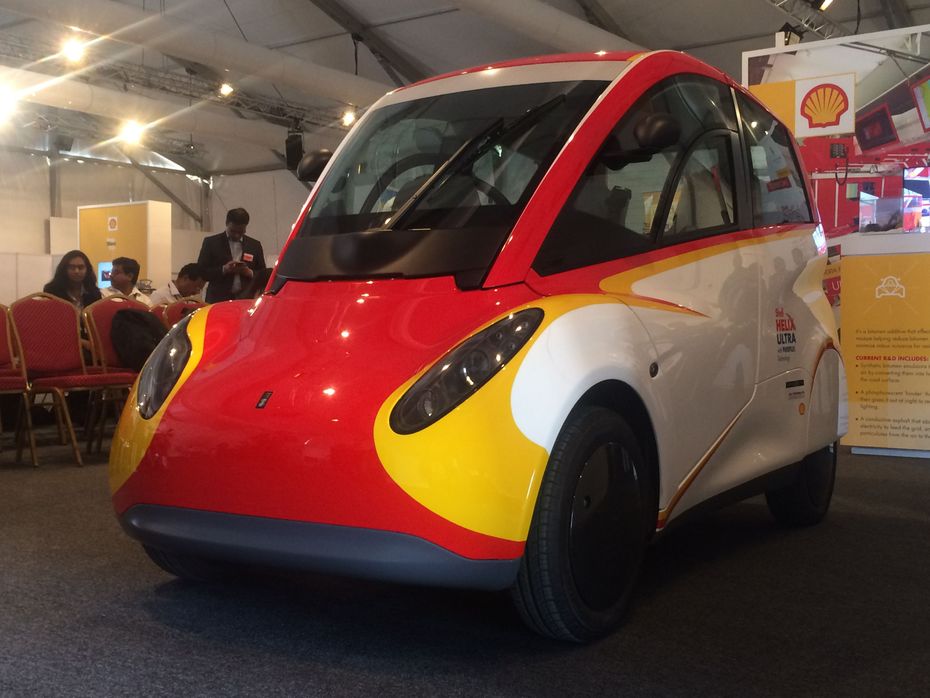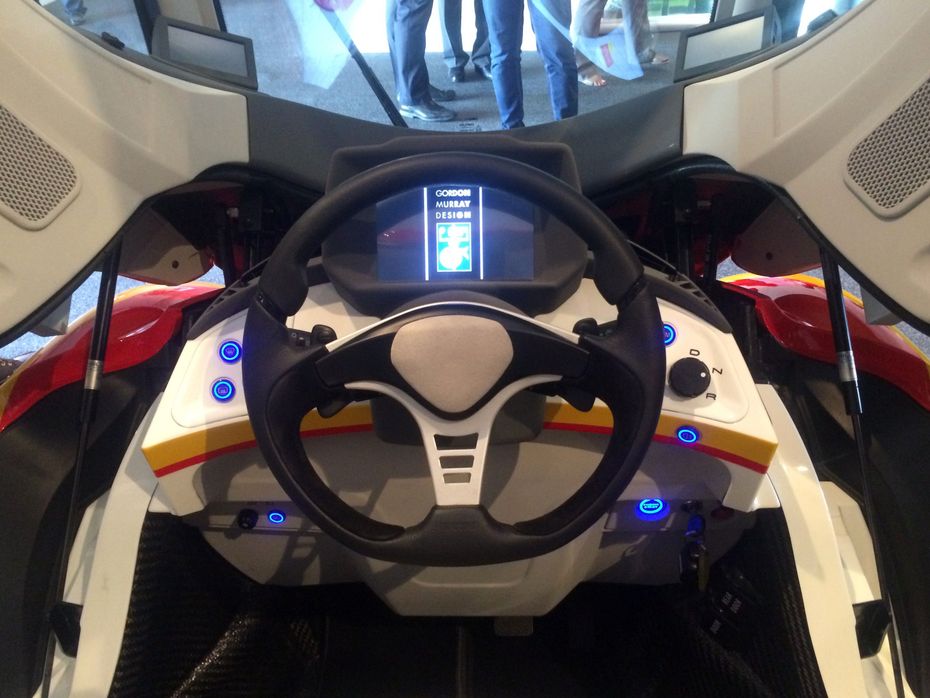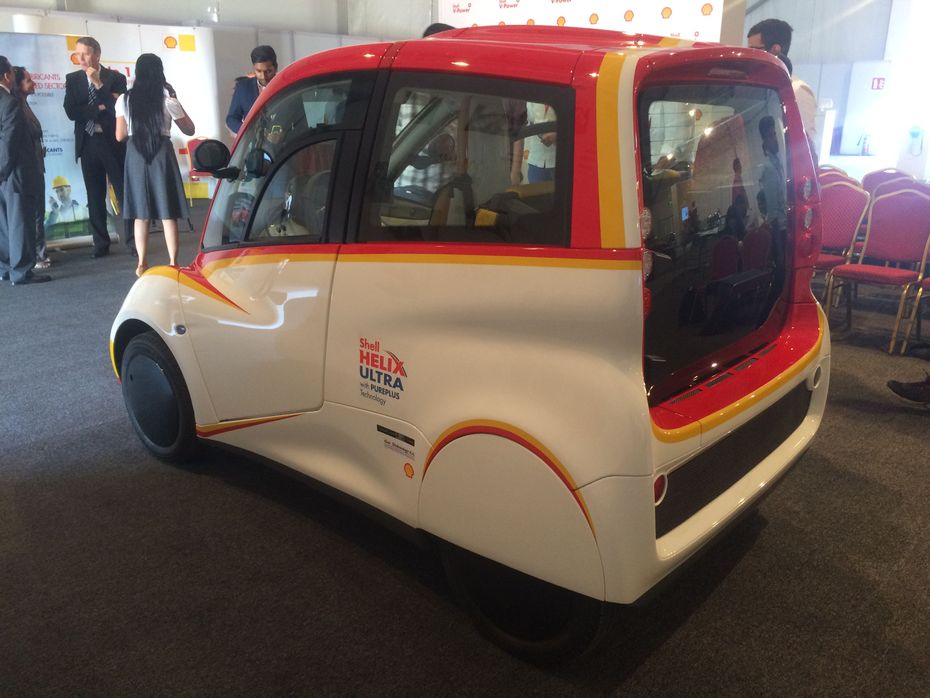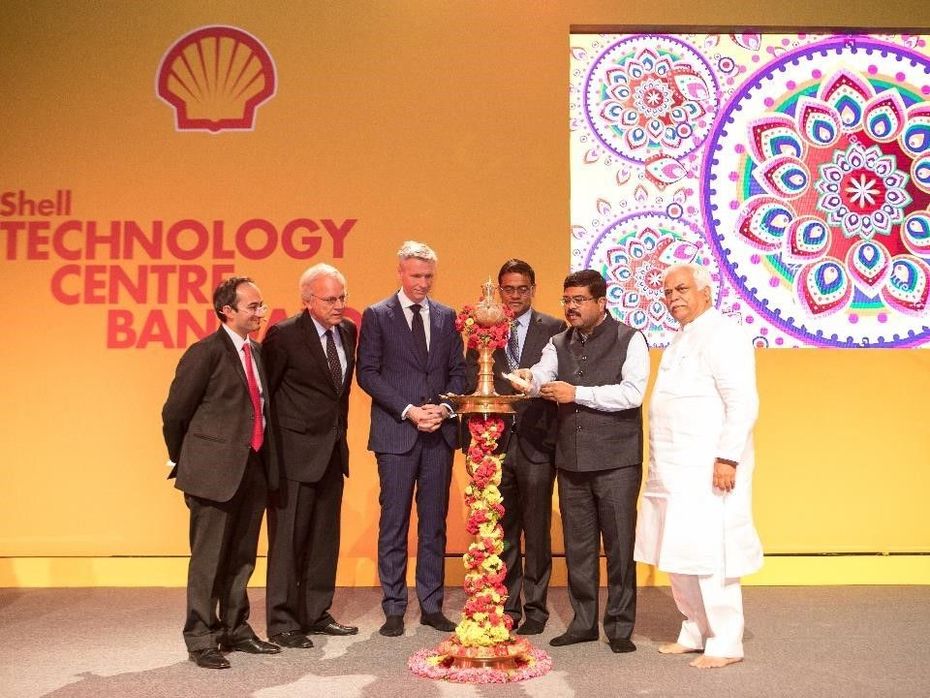
3 New Major Design Details Mahindra XUV 3XO Will Pack Over...
- Apr 12, 2024
- Views : 9897


When Shell, Geo Technology and Gordon Murray Design collaborated in 1988 on Ayrton Senna’s and Alain Prost’s Honda-powered McLaren Formula1 race cars, they won all but one Grand Prix that season - a record that still holds. This time around, the three companies have collaborated again but for a purpose that’s worlds apart. Considering that Shell-fueled cars have scorched race tracks for decades now, Shell might only be balancing its Karma by developing a car that’s affordable, accessible and capable of reducing personal transport energy use drastically.
The lubricant major, that also specialises in fuels, inaugurated its latest Technology Centre in Bangalore, only its third in the world, apart from the two in Amsterdam, Netherlands and Houston, USA. Shell also took the opportunity to host its “Future of Mobility” event, and showcased its Project M for the first time in India. This is a car that focuses on returning exceptional fuel efficiency numbers, unlike the cars it powers for motorsport.

The car has been built from the ground up based on Gordon Murray Design’s patented iStream platform, which is the same as the Yamaha Sport Riding Concept that was showcased at the 2015 Tokyo Motor Show. Erik Bonnio, executive VP, downstream technology, Shell, says, ”The boundary conditions of the powerplant and power to weight ratio were defined by Gordon Murray Design in order for us to understand what weight we were dealing with.”
He further adds, “If you visit Gordon’s place, every door has a sign that reads ‘Think Light’”, hinting at the significantly light (550kg) weight of the car. Murray’s F1 expertise has come in handy for the aerodynamics as well. Kevin Doyle, development manager, Gordon Murray Designs, claims the car felt considerably planted on motorways in the UK even at high speeds. The tall boy even cuts down on body roll, thanks to the strut, wishbone and anti-roll bar at the front. It looks quirky at first glance, but every line on the car has been designed to meet a specific purpose.

The front half of the car pops open like a clamshell, revealing the McLaren F1-esque central seat for the driver, flanked by two rear seats. However, once sat, you actually understand what Erik Bonnio was speaking of when he mentioned how compactly everything had been packed, as every corner of the car is at an arm’s distance! The dashboard features a cute-looking steering wheel along with basic bits like air-conditioning vents, a gear selection dial, buttons to pop the front open, turn emergency lights on and off and an air-con on/off button.
Some of the parts, like the top of the dashboard that houses the vents for air-conditioning are 3-d printed, apart from the cabin and chassis using carbon fibre extensively. In fact, part of the frame housing the cabin is tubular and is made of steel pipes having a diameter of 60mm and 1.5mm thick. Carbon fibre has been glued onto this part of the frame to increase its strength, without making it significantly heavy. A lot of the carbon fibre on the car is recycled, and extensive use of the material has resulted in a low overall weight of 550kg for the car. Interestingly, the car meets Euro-NCAP regulations for pedestrian and passenger safety in the event of an impact, and is capable of absorbing front and rear impacts and also gets seat belts for all three occupants.

The car is powered by a 600cc three-cylinder Mitsubishi engine re-engineered by Geo Technology (founded by Honda’s F1 engine designer, Osamu Goto) to boost its efficiency and cut down on losses. For instance, valve train components get a diamond-like carbon coating to reduce wear and resistance. In this guise, the engine offers 43PS and 64Nm of torque, which might sound modest. That said, its powertrain is the car’s most impressive aspect, apart from its design, of course. The car can return up to 38kmpl, which is far higher than any production car in the country, and is, in fact, in the same league as most current generation 150cc, single-cylinder motorcycles on our roads!
The icing on the cake for me was getting a chance to drive the car. This being a concept car, all we got was 10 minutes behind the wheel. Getting in was fairly easy despite its tiny dimensions, thanks to the clamshell-like front portion of the car. I was reasonably comfortable in my seat too, though I cannot say the same about the rear seats. The three-cylinder motor was quick to throb to life at the push of the starter button, and it sounded anything but ordinary. To give you a perspective, it sounded somewhat like the Tata Nano. Needless to say, I was excited at the prospect of getting to drive a Gordon Murray-designed concept car. Contrary to my expectations, the car was far from being sporty, given its focus on returning stupendous efficiency.
The humble 600cc engine is mated to an AMT, borrowed from the Smart hatchback. I wasn’t allowed to go beyond 30kmph, but I’m told the car is capable of clocking 150kmph. Credit for the excellent claimed efficiency of 38kmpl also goes to Shell’s bespoke engine oil that has been developed for the car specially. The oil is based on Shell’s premium product, the Shell Helix Ultra with ground-breaking SAE 0W-12 formulation, one of the latest viscosity grades. Shell claims it to be its most advanced product and is the first ever to be made from natural gas.

Shell Helix Ultra has been made from natural gas resulting in an engine oil that is stronger and less volatile (at the molecular level) than those made from traditional crude oil. The oil is remarkably low on viscosity and its formulation includes an advanced anti-wear system. Also, the variation in its viscosity is lesser compared to conventional oils. To further optimise engine performance, the oil contains added friction modifiers that reduce friction by 15 per cent as compared to standard engine oils. Lower friction results in a longer life cycle and reduced wear and tear of the engine, and Shell says the oil alone adds to a five per cent gain in efficiency. The car can cover a distance of 100km in just 2.6-litres of fuel when driven at a constant 70kmph. Also, Shell claims the car produces 28 per cent less CO2 as compared to a conventional petrol-engined car and 32 per cent lesser than a hybrid car.
The concept is revolutionary, no doubt, and Shell claims you could build a Project M, drive it for 100,000km and still have a carbon footprint lower than what it would take to manufacture and get an average SUV in the UK to the showroom. The bad news is Shell doesn’t plan to put the car into production or launch it. That said, we do hope it will lay the foundation for more efficient cars and manufacturing processes too. In the words of Andrew Hepher, VP, Global Commercial Technology, Shell, “This small car is full of big ideas.”

On another note, Shell’s technology centre in Bangalore is built on a sprawling, 52-acre piece of land than can house up to 1500 experts. The hub will bring together a variety of tech experts, laboratories and technology demonstration units to work on a variety of technical disciplines like liquefied natural gas, subsurface modelling, data analysis, engineering design, bitumen, distillation, water technology and enhanced computational research. The centre is also helping pioneer efforts - using its IH2 (waste to fuel) technology - to turn forestry, agricultural and municipal waste into transportation fuels, with a new demonstration plant being built at the site.

3 New Major Design Details Mahindra XUV 3XO Will Pack Over...

Tata Curvv: A Much Clearer Look At Its Interior Ahead Of Its Unveiling

Citroen Basalt vs Tata Curvv: Exterior Design Compared

10 New Features Expected In The Upcoming 2024 Mahindra XUV 3XO...

The Fronx Has Been Rebadged! Meet The Toyota Urban Cruiser Taisor,...

Here’s How Fuel Efficient The 2024 Maruti Suzuki Swift Sold In...

MG Hector And Hector Plus Blackstorm Edition Launched At Rs 21.25...

Mahindra XUV300 Facelift Teased, Gets A New Name

Toyota Urban Cruiser Taisor : Base “E” Variant Detailed...
India's largest automotive community